- Home
- Andy Andrews
The Heart Mender: A Story of Second Chances
The Heart Mender: A Story of Second Chances Read online
“With the skill of a virtuoso, Andy Andrews continues his string of successful writing performances in The Heart Mender, his latest entertaining masterpiece. The plot, characters, and storyline combine to summon the reader into an unforgettable experience.”
—Robert Silvers
Executive Publisher, The Saturday Evening Post
“At the Maui Writers Conference, we have had the best in the country, including filmmakers Ron Howard and James L. Brooks, Pulitzer winners Wendy Wasserstein, Dave Barry, Jimmy Breslin, and Carl Bernstein, best-selling authors Elmore Leonard, Mitch Albom, Robin Cook, Tony Hillerman, John Saul, Elizabeth George, Barbara Kingsolver, and others. Andy Andrews is right at the top of the list. He is mesmerizing, funny, captivating, heartwarming, and just plain ol’ good. To have one of his books on your shelf brings his hope-inspiring wisdom into your home.”
—Shannon Tullius
Cofounder & Director, Maui Writers Conference
“The Heart Mender is a sweeping adventure filled with many emotions. The compelling narrative unites the past and present in a fantastic must-read!”
—Bonnie Tiegel
Senior Supervising Producer, Entertainment Tonight/The Insider
“The principle woven into this incredible story has changed my life.”
—Tim Brando
CBS Sports Host & Commentator
“If life had a ‘reset button’—The Heart Mender would be it.”
—Joseph Farah
Editor and CEO, WorldNetDaily.com
OTHER BOOKS BY ANDY ANDREWS
The Traveler’s Gift
The Young Traveler’s Gift
The Lost Choice
Mastering the Seven Decisions
Socks for Christmas
Return to Sawyerton Springs
The Butterfly Effect
The Noticer
The
HEART
MENDER
A STORY OF SECOND CHANCES
ANDY
ANDREWS
To the Stimpson family
of Mobile, Alabama.
© 2005 by Andy Andrews
All rights reserved. No portion of this book may be reproduced, stored in a retrieval system, or transmitted in any form or by any means—electronic, mechanical, photocopy, recording, scanning, or other—except for brief quotations in critical reviews or articles, without the prior written permission of the publisher.
Published in Nashville, Tennessee, by Thomas Nelson. Thomas Nelson is a registered trademark of Thomas Nelson, Inc.
Thomas Nelson, Inc., titles may be purchased in bulk for educational, business, fund-raising, or sales promotional use. For information, please e-mail [email protected].
Interior photos: Jared McDaniel, Studio430.com
Cataloging in Publication Data . . . to Come
2005008267
Printed in the United States of America
10 11 12 13 14 RRD 6 5 4 3 2 1
CONTENTS
AUTHOR’S NOTE
PART ONE
CHAPTER 1
CHAPTER 2
CHAPTER 3
PART TWO
CHAPTER 4
CHAPTER 5
CHAPTER 6
CHAPTER 7
CHAPTER 8
CHAPTER 9
CHAPTER 10
CHAPTER 11
CHAPTER 12
CHAPTER 13
CHAPTER 14
CHAPTER 15
PART THREE
CHAPTER 16
WHERE ARE THEY NOW
READER’S GUIDE
ABOUT THE AUTHOR
ACKNOWLEDGMENTS
REFERENCES
AUTHOR’S NOTE
THE BOOK YOU ARE HOLDING IN YOUR HANDS HAS GENERATED more questions than any work I have ever produced. Therefore, in an effort to satisfy what might become an overwhelming curiosity, maybe it is best that I address those questions for you now—before you begin to read!
I am often asked if I have a favorite among the books I have written. Yes, I do. And this is it. The Heart Mender is not only what I believe to be my best work, it is the most compelling—bringing all aspects of a mystery, love story, and thriller to the table in order to deliver a life-changing principle.
What is my greatest career disappointment? Again, I would answer, “This manuscript you hold in your hands.” Not this title—just the manuscript. You see, the manuscript was previously published under another name—Island of Saints—and for the most part barely even saw a bookstore! Through issues of bad timing, little previous success of my own, and zero publicity, the book was quickly forgotten.
The few people who did find the book, however, became (and remain) extremely vocal about their love for the story and its power. Soon a movie producer found it, and the ball, which had seemed lost in deep weeds, started rolling again.
Now released with a more appropriate title, the backing of a happy publishing company, and a few rabid supporters who still call this their favorite book, The Heart Mender is ready to go. And now there is only the biggest question of all waiting to be answered . . .
“Is this story true?”
Without exception, every person who has read this book has asked that question.
And the answer is . . . yes . . . for the most part. All the numbers, the history, the dates, and the items I found are real. I have changed some locations and most of the names. The principal characters do exist, but perhaps not in the specific manner in which they are presented. Curiously, a few of the main characters’ experiences turned out to be more common than I had previously believed. When the first incarnation of this manuscript was produced, I received communication from several families with proof that they, too, had begun their lives in this country with the very same kind of history as that of my friends.
At the end of this book (and don’t read ahead!) I decided to add a “Where Are They Now?” section, which I think you will enjoy. And before you ask . . . yes . . . for the most part, it will be true!
Andy Andrews
Orange Beach, Alabama
PART
ONE
CHAPTER 1
IT IS EARLY SUMMER AS I SIT AT MY DESK AND FINALLY begin the process of sorting what I know to be true from what I merely suspect. As I form the words and type them into record, I shall endeavor to separate facts from the legend and myth in which they have now been shrouded for decades.
As an author, I usually have a particular work living in my head—complete with its title, plot, subplots, and ending— for months before leaping, as fully formed as I can make it, onto the page. At present, however, I haven’t even a working title for this manuscript. The book you are holding, if indeed it has come to that, was nothing I ever intended to write. My next two books have been outlined and are ready to begin, but I have become distracted by an attempt to solve a mystery literally thrust into my life by the earth itself. Let me explain . . .
I live with my wife, Polly, and our two boys on a small island situated along the Florida/Alabama coastline of the northern Gulf of Mexico. There is a single, small bridge connecting us to the mainland. Orange Beach, Alabama, just to our west, is where we bank, vote, attend church, and shop for groceries.
Perdido Key, Florida, is to the east. A thirty-second drive from the bridge in that direction crosses the Florida state line and passes the world-renowned Flora-Bama Lounge, a loosely constructed conglomeration of wood, brick, and tent material most famous, I suppose, for being famous. Therefore, it is always packed, and if the wind is right, sometimes late at night I can hear strains of “Redneck Mother” or “You Don’t Have to Call Me Darlin’ . . . Darlin’” from my dock.<
br />
Over the past twenty years, this previously ignored coastline has increasingly become a prime destination for summer tourists and winter snowbirds drawn to the area by the turquoise water and dazzling white sand. The beach, one of the few in the world to be composed of only one mineral— in this case finely crushed quartz—is part of a one-hundred-mile stretch of beach that includes the Florida towns Panama City and Destin and is known as the “Miracle Strip.”
Our home is situated on a dune line that rises twenty-five feet from the water’s edge and runs east to west, affording a view of the water on both sides of the island. The landscaping is minimal at best. Here and there we’ve managed to coax a few flowers out of the sand, and several potted palms grace the dock. Polly holds with the belief that “natural is better,” and I, having not forgotten the chores thrust upon me by my garden-crazy parents, am happy to agree.
So, instead of grass demanding to be mowed and azalea bushes begging to be fertilized or pruned or have pine straw placed by hand around their precious roots, we have sea oats and wax myrtles and ancient oak trees growing in the sand. And they grow quite nicely without any help from me. Most of the time.
Last September, I noticed the largest wax myrtle on our property had begun to die. In the almost one hundred years of its existence, the tree had grown to well over forty feet and shaded an area the size of a tennis court. It crowned the top of the dune near our kitchen porch, and boaters often noticed this magnificent monarch even before they saw the house. Because of its height and close proximity, my family was keenly aware of the tree’s impending demise.
By the new year, no semblance of life was left in its branches. I was surprised to find myself strangely relieved, as if an old friend had finally passed away after a struggle that had become too difficult to witness. And after a proper period of what I called mourning and my wife termed “yard work procrastination,” I knew it was time to remove the tree.
The wax myrtle, also known as the southern bayberry, was used by the Indians and early American colonists to make candles. Its distinctive, fragrant scent comes from volatile oils contained in tiny glands on the leaves. These oils render the tree highly flammable and remain in the tree long after it dies. Dead wood infused with combustible resin is not a good combination when it is located so near a house, and so it was with a heavy heart (and a portable radio tuned to the NFL play-offs) that I struck my first blow against the trunk of the tree.
I am an ax man. Ever since, as a teenager, I saw the movie in which a chainsaw was the weapon of choice, I’ve never been especially keen on that particular sound. So, instead of a quick rip and a crash, it took until early afternoon to chop down the tree and haul its scattered pieces away, leaving only the stump as a reminder that anything had been there at all. But as much as we loved the tree, no one wanted the reminder. “Dig it up,” my wife urged in what she felt was an encouraging voice, and I did.
Granted, when surrounded by sand, a stump is not the formidable opponent it becomes when its roots have embedded themselves in clay or a rocky soil. There is, however, something to be said for a root system having spent a hundred years in search of nourishment. Tremendous mats of stringy, underground branches stretched in far larger networks than their leafy counterparts had ever accomplished in the sunshine. I was shocked and exhausted, I had a hole in the ground the size of my grandfather’s Buick, and I was starting to think in regard to my dear wife, What she doesn’t know won’t hurt her. I was about to reverse course and hide the roots that were left by covering up the whole mess when my shovel struck something that didn’t feel like root.
For a brief moment, the shovel stuck. It was as if I had hit a monstrous wad of gum or taffy. And the sound was different. I had grown accustomed to the high-pitched swish of the steel shovel as it cut through the sand, but this tone reverberated as a dull thunk. At the time, I didn’t think it sounded like metal, but that’s exactly what it was.
With the shovel’s retreat, I exposed a hand-sized portion of rusted . . . something. Sand poured into a slit in the object that had obviously been opened by the slicing of the shovel. On my hands and knees, I quickly pulled wads of tiny roots away from the item and, with my fingers, pried it loose. It was a can.
I turned the heavily rusted object over in my hands, being especially careful not to cut myself on any of the sharp edges. It was large . . . like the gallon-sized cans a restaurant uses for vegetables or refills of ketchup. The can was sealed at both ends, but the rust, I noticed, had created several tiny holes in its surface in addition to the large one made by the shovel’s blow.
The presence of the holes made it apparent that the can was not filled with food or liquid of any kind, but still, it was heavier than an empty can should feel. And it rattled when I turned it. Although I assumed the clatter to be caused by shells and sand, I was curious and pried apart the thin, fragile metal.
Inside the can, dank and mildewed, was what I determined to be an old chamois— once soft leather now stiffened by age and the rusty dampness in which it had been imprisoned. Pulling the leather free from the can, I saw that it had, at one time, been carefully folded. Now, though, it was shrunken somewhat, blackened by mold and almost hard on its edges like a big, ugly potholder that someone had starched.
The leather folds came apart easily in my hands, and as they did, a button fell out and onto the sand at my knees. A silver button. Though somewhat tarnished, the face of the button was beautifully etched with an anchor. From its back extended a single loop surrounded by letters so tiny that I was unable to make out anything more than a K, an R, and on down the line of script, what I thought might be an A.
Placing the button on the kitchen porch behind me, I tugged harder at the leather from which it had come and tore a piece completely off. Three more buttons, identical to the first, along with a ring, fell into the sand. The ring was also silver, a bit more discolored than the buttons, and had as its center point an eagle surrounded by a wreath. The ring also had letters—these much larger—which ran the entire outside circumference of the circle. I read the words aloud: “Wir Fahren Gegen Engelland.”
Not being able to translate or even identify the language, I set the ring aside with the buttons and continued to peel apart the crusty leather. With the final layer laid open, I slowly set the chamois on the sand and gazed openmouthed at what it held. There were four more buttons, making a total of eight, a silver anchor badge about 2 inches tall by 1 ½ inches wide, some kind of black-and-silver medal with a bit of red, black, and white ribbon attached, and three, only slightly water-damaged, black-and-white photographs.
The first photograph was a simple head and upper body shot of a man in military attire. I didn’t recognize the uniform, but saw immediately that the buttons in the picture were the same ones I now had in my possession. In fact, I counted them. Eight silver anchor buttons in the photo . . . and eight on my porch. I really couldn’t tell if the man in the picture was twenty or forty, and in that way, he reminded me of old pictures I have seen of college kids in the nineteen thirties or forties. They all looked years older than they actually were.
The man was not smiling. It was as if he was not entirely comfortable with the idea of having a photograph made. He was not thin or fat, though “thick” might have been an accurate description of his body type. The same eagle that appeared on the ring was also on display on the right breast of his uniform jacket and the top of an odd, beret-type cap. Stitched in large, Gothic script along the lower brim of the cap was the word Kriegsmarine.
The second photograph was smaller and had a decorative black border framing the print. In it were three figures: a young woman in what struck me as the best dress she owned, a man in a suit and white shirt with no tie, and a baby in a wagon between them. Whether the child was a boy or girl, I couldn’t tell. Though the woman looked directly (fearfully?) into the camera, the man’s attention was focused toward the child, causing his face to appear in profile. I wasn’t certain, but I thought that m
aybe he was the same uniformed man in the previous photograph.
It was the third photograph, in addition to the ribboned medal, that had my attention. The black-and-silver military decoration was cast in the shape of a cross. At the bottom leg of the cross was a date, 1939, and in its center a more familiar symbol. I blinked as I touched it with my finger and shivered, whether from the January chill or something unseen, I didn’t know.
Quickly I looked again to the last photograph. Men on a boat of some sort . . . lined up as if for inspection. On the right corner of the front line, yes, there was the uniformed man from the first picture. Four officers in highly decorated military overcoats were in the foreground of the shot. Three wore dark clothing with what I imagined to be gold or silver trim. The fourth man, to the far left of the photograph, was dressed immaculately in an outfit cut in the same design, but of a paler material. It was this man whose face I recognized. This was the man for whom the symbol on the medal had been created. But why on earth was a picture of Adolf Hitler buried in my backyard?
CHAPTER 2
A WEEK LATER, I WAS STILL NO CLOSER TO ANSWERING MY question. Where had this stuff come from? At least the Internet, with its various search engines, had begun to fill in some of the blanks about what the actual pieces were. And the swastika embossed on the medal gave me some idea of what I might find.
After rushing inside and fanning out the items on the kitchen table for my astonished wife, I retreated to my office and cranked up the computer. The first word I searched was Kriegsmarine, the script on the man’s hat in the first picture. I quickly found that it was the name of the German navy controlled by the Nazi regime until 1945. Previously titled the Reichsmarine, the Kriegsmarine was formed in May of 1935 after Germany passed the “Law for the Reconstruction of the National Defense Force.” This law brought back into existence a German military presence that had been essentially banned by the Treaty of Versailles at the end of World War I.

 The Heart Mender: A Story of Second Chances
The Heart Mender: A Story of Second Chances The Final Summit: A Quest to Find the One Principle That Will Save Humanity
The Final Summit: A Quest to Find the One Principle That Will Save Humanity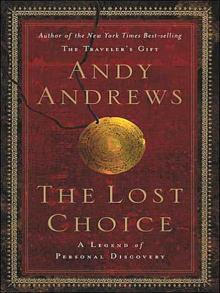 The Lost Choice
The Lost Choice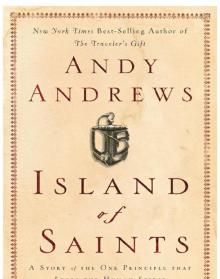 Island of Saints: A Story of the One Principle That Frees the Human Spirit
Island of Saints: A Story of the One Principle That Frees the Human Spirit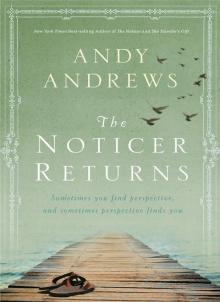 The Noticer Returns
The Noticer Returns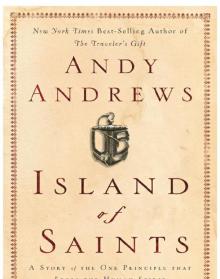 Island of Saints
Island of Saints The Traveler's Gift
The Traveler's Gift The Final Summit
The Final Summit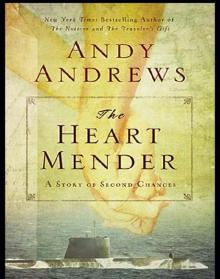 The Heart Mender
The Heart Mender